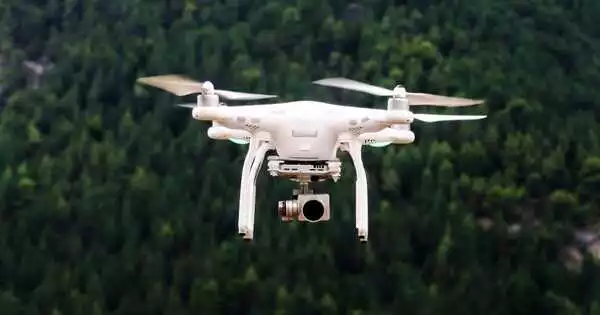Unmanned aerial vehicles (UAVs) have enormous potential to provide people with a safe environment and disease prevention services. Incheon National University scientists have taken advantage of this potential by developing a cooperative infrastructure for artificial intelligence-assisted aerial and ground operations using UAVs and mobile robots. This infrastructure can provide smart cities with surveillance and epidemic prevention activities.
In recent years, there has been a great deal of interest in mobile robots and unmanned aerial vehicles, primarily because these technologies have the potential to provide enormous benefits to us. With the rise of 5G technology, UAVs or drones, and mobile robots are expected to provide a wide range of services in smart cities, including surveillance and epidemic prevention, in an efficient and safe manner.
It is now well-established that robots can be deployed in a variety of environments to perform tasks such as surveillance and rescue operations. However, until now, all of these operations have been independent of one another, often operating in parallel. To realize the full potential of UAVs and mobile robots, we must combine these technologies so that they can support and augment one another.
It is critical to look at surveillance and unprecedented epidemic spread such as COVID-19 together. This is why we designed the next-generation system to focus on aerial-ground surveillance and epidemic prevention supported by intelligent mobile robots and smart UAVs.
Dr. Kim
To that end, a team of researchers led by Associate Professor Hyunbum Kim of Incheon National University in South Korea created an AI-assisted cooperative infrastructure for UAVs and mobile robots. In a paper published in volume 36 issue 3 of IEEE Network on 13 July 2022, the researchers outline the entire structure that can use UAVs and mobile robots in public and private areas for multiple operations like patrolling, accident detection and rescue, and epidemic prevention.
According to Dr. Kim, “It is critical to look at surveillance and unprecedented epidemic spread such as COVID-19 together. This is why we designed the next-generation system to focus on aerial-ground surveillance and epidemic prevention supported by intelligent mobile robots and smart UAVs.”

The system designed by the team is composed of two subsystems, one for public areas and one for private areas. Both systems comprise of a Centralized Administrator Center (CAC). The CAC is connected to various Unified Rendezvous Stations (URSs) that are situated in public areas. These URSs are where the UAVs and mobile robots receive replenishment and share data.
Mobile robots are also equipped with charging facilities to recharge airborne docking UAVs. The public system aims at patrolling public areas, detecting accidents and calamities, providing aid, and performing epidemic prevention activities like transporting medical equipment. The private system can provide rapid medical deliveries and screening tests to homes.
But what about privacy in the face of such vigilance? Dr. Kim assuages fears by saying, “Privacy is a major concern for any surveillance system. As a result, we developed distinct privacy settings for various systems. There are restricted zones for the public system that only authorized public UAVs can enter. For the private system, there are permanent private zones where no UAVs may enter except in emergencies, and temporal access zones where permitted UAVs may enter with the owners’ legal permission.”
The authors are optimistic about this infrastructure’s ability to improve people’s lives. The system is capable of detecting and preventing potential terror in public spaces, as well as detecting and extinguishing fires in private homes. Indeed, two is better than one and we look forward to living in this cooperative and optimistic future!














